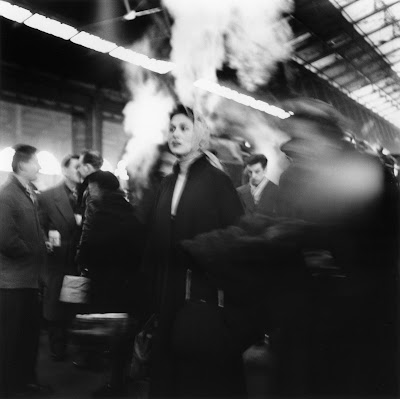Gare du Nord
15 October 2011 - 17 January 2012
Paris was where it was at. It was the place to be. For decades the sparkling nightlife and intellectual ferment of the French capital attracted writers and artists from around the world. Among them were Dutch photographers, who flocked to Paris to capture romantic images of life in the city’s streets. In this exhibition, pictures snapped by photographers like Henri Berssenbrugge, Emmy Andriesse, Ed van der Elsken and Johan van der Keuken bring to life the twentieth-century metropolis that plays the starring role in the Gemeentemuseum Den Haag’s concurrent exhibition Paris, City of modern art.
Paris shares a long history with photo graphy; it is the birthplace of the medium. It would become the city of modern art, but it was the capital of photography right from the moment when Louis Daguerre first presented his discovery to the world in 1839. Dutch photographers were already going there in the 1920s and ’30s to study the discipline at specialist schools or in the hope of learning the profession by working as assistants to renowned practitioners like Man Ray or Berenice Abbott.
In the 1950s, Paris quickly recovered its pre-war attractiveness; the city had lost nothing of its glamour in the intervening years and it held a strong appeal for the generation of twenty-year-olds who were now discovering the world. The photo-books about Paris published between 1954 and 1963 by Nico Jesse, Ed van der Elsken and Johan van der Keuken were immediately hugely popular. They show a dream world far from the petty and restrictive Dutch society of the period; the most photographed city in the world held out the prospect of a more intense and adventurous life. These books did much to create the alluring image of Paris that still exists in the collective consciousness of the Dutch population.
Nico Jesse’s 1954 photo-book Vrouwen van Parijs (‘Women of Paris’) gives a light-hearted and romantic view of the city. Jesse – a family doctor as well as a passionate photographer – photographed no fewer than 2000 women in the space of ten days. His portraits of actresses, students, mannequins and female vagrants offered a fascinating glimpse behind the scenes of Paris and introduced the Dutch public to the ‘Parisienne’ in all her different facets.
In his 1956 photo novel Een liefdesgeschiedenis in Saint Germain de Prés (also published as Love on the Left Bank), Ed van der Elsken offered a rather different view of the city. He had been living in Paris for a number of years and therefore had more opportunity to photograph real street life. He hung around with a group of existentialist young people whom he photographed regularly. They became the main characters in his (fictive) love story, which portrayed a rougher and tougher side of Parisian life (in particular that of the bohemian artists in and around the Quartier Latin).

Gare du Nord showcases work by around fifty Dutch photographers. Exhibits will include images not only of anonymous street life, but also of celebrities like Orson Welles, Juliette Gréco, Christian Dior and the still extremely young Brigitte Bardot and Yves Saint Laurent. In addition, there will be a chance to see two short experimental films: Joris Ivens’ 1927 film Études des mouvements à Paris (Studies of Movements in Paris) and De Hallen van Parijs (also known as Les Halles de Paris) made by Paul Schuitema in 1939. The latter was digitized last year by Eye Film Institute Netherlands and is now for the first time available to the general public.
Ata Kando ...
Dirk de Herder ...
Emmy Andriesse ...
























Geen opmerkingen:
Een reactie posten